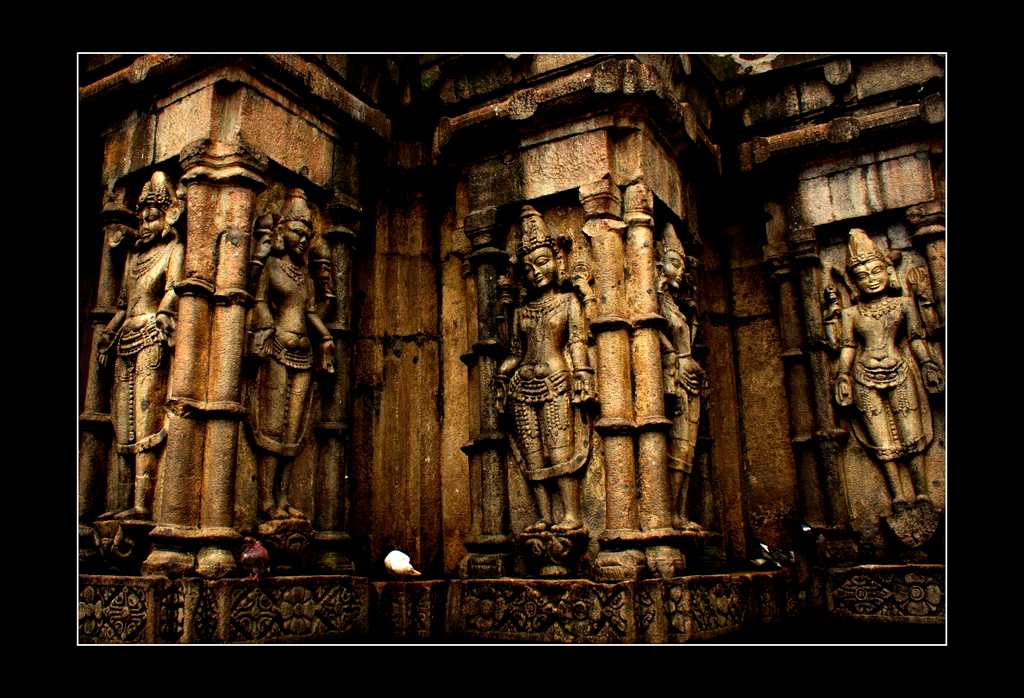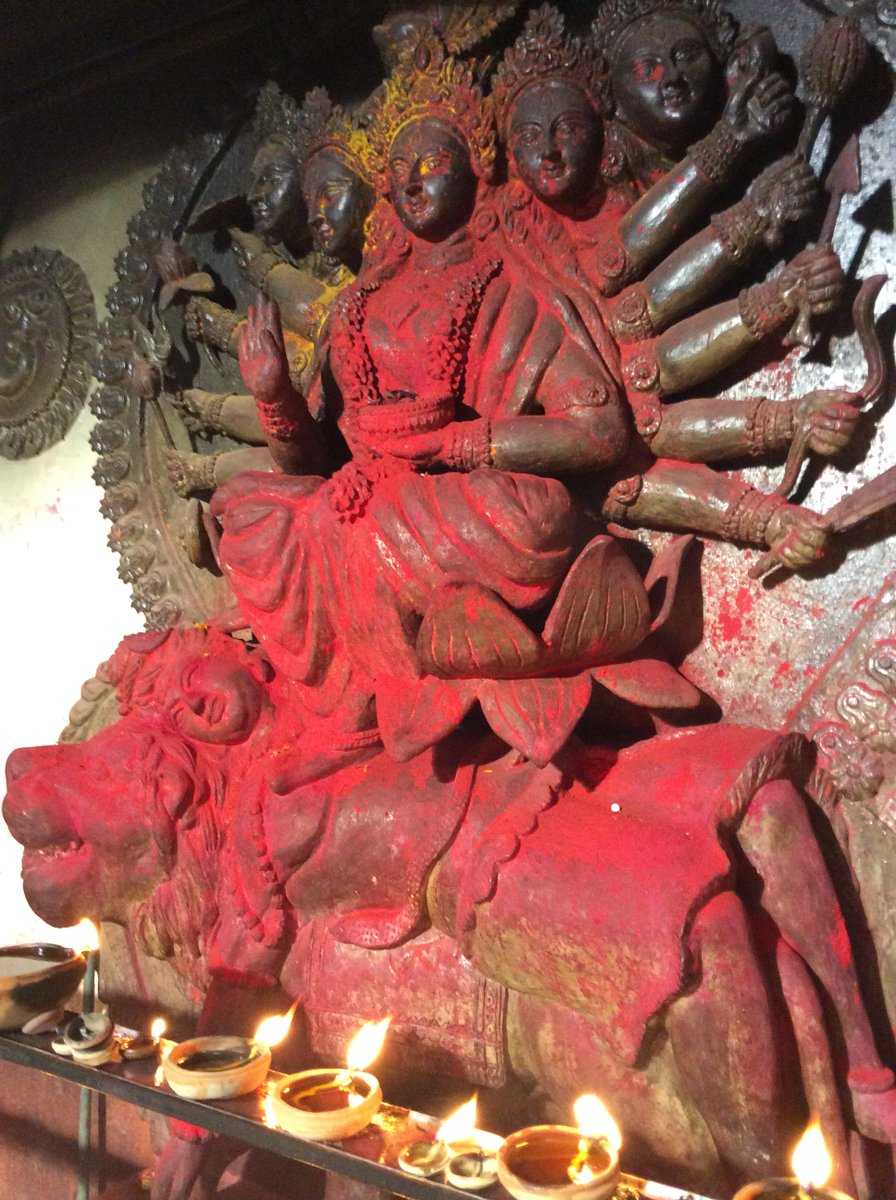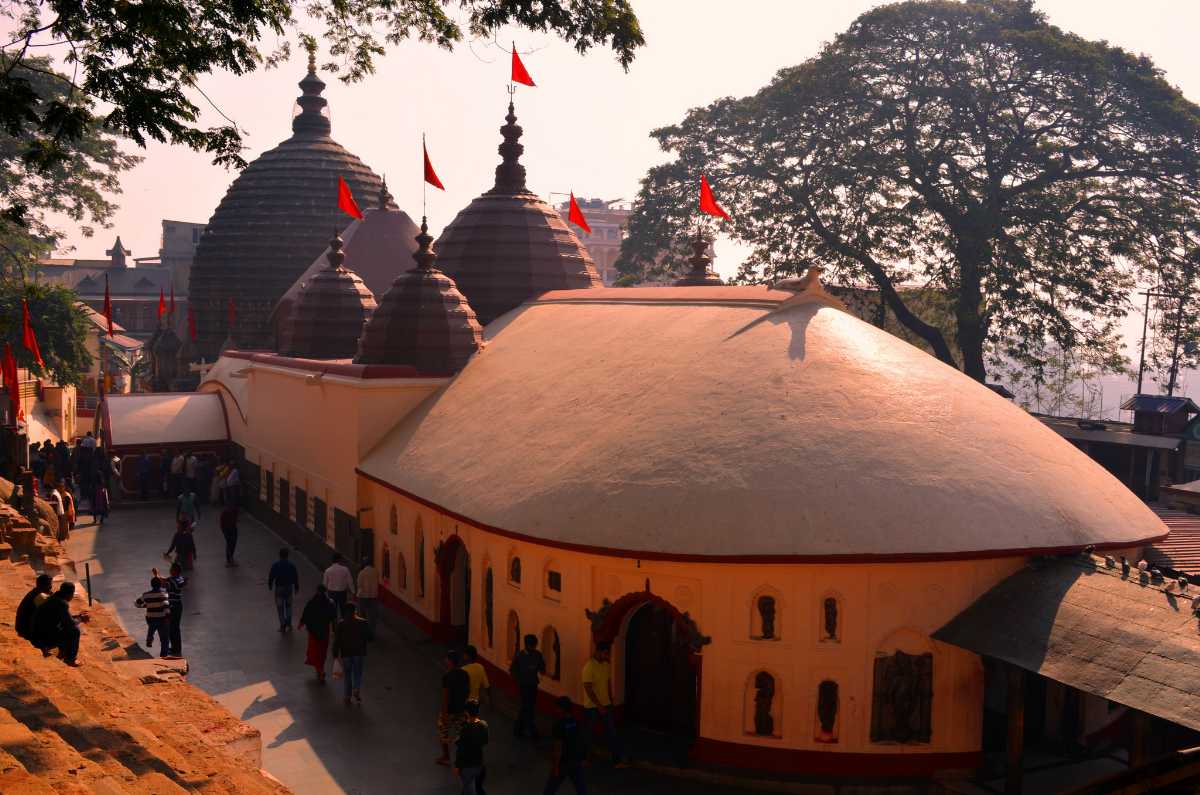Kamakhya dates back to the 9th-century where its existence is put down in Tezpur plates of Vanamalavarmadeva of the Mlechchha dynasty. The archaeological evidence states this sanctuary to have been existing since the 8th to 9th century. It is also believed that the earliest temple in the complex was constructed during the Mlechchha dynasty.

Idols carved on the stone wall of Kamakhya Temple
Kamakhya is believed to be an essential aspect in the field of black magic. Tantrikism had become an essential part of the temple's stature. This holy place had soon become a renowned Centre which witnessed tantric sacrifices, mysticism and the dark fanatics of sorcery. It is believed that Mystic Buddhism, too gained popularity in Kamarupa in the tenth century. Some renowned Buddhist professors hailed from Kamrupa in the tenth and eleventh centuries.
The Kamakhya temple is not just a famous pilgrimage site in Assam, but is also a unique temple in the country.Located on the Nilachal hill in the capital city of Guwahati, the deity of the temple, Kamakhya Devi is revered as the ‘Bleeding Goddess’.It is believed that the ‘Garvagriha‘ or the sanctum sanctorum of the temple houses the mythical womb and vagina of the Hindu goddess Shakti.Curiously enough, every year during the month of Ashaad (June), the Brahmaputra river near Kamakhya turns red. It is believed that the goddess ‘menstruates’ during this period.

Considering this to be a woman’s power to give birth, the deity and temple of Kamakhya is a celebration of this ‘shakti’ within every woman.The story of origin is behind the temple quite interesting. It revolves around the Hindu gods Shiva and Sati.Legend has it that Sati fought with her husband to be part of the grand yajna that her father was offering to appease the gods—of which both were purposefully not invited to. Paying no heed to her husband’s advice, Sati headed to the yajna nevertheless, only to be insulted by her father.It is believed that Sati’s body parts fell in 108 locations across the country, which are today known as Shakti peeths.

Kamakhya finds its name from the Hindu God of love, Kamadeva. As the story goes, the god had sought out Shakti’s womb and genitals after having lost virility to a curse.As a tribute to Shakti and her ability to lend back Kamadeva his potency, the deity of Kamakhya Devi was installed and continues to be worshipped until today.The place where the Kamakhya temple stands today is also considered to be where Shiva first courted Sati.An offering of Hibiscus flowers for the Devi. In a country that continues its archaic attitude towards menstruation as unholy and gruesome, it is important for each one of us to know the progressive approach that the Kamakhya temple displays—of celebrating womanhood.While there is no image of Shakti in the temple complex, it is Yoni or the female genitalia of the goddess located in the corner of the cave in the temple that is the object of reverence.

Many exciting stories do the rounds of the temple. It is believed that once Sati's father invited her to a grand yagna. Sati wanted to be a part of the yagna but was denied permission by her husband, Lord Shiva. Sati visited the yagna after having fought with her husband, and upon her arrival, her father insulted her husband. This enraged Sati to the core, and so she jumped into the fire, thus giving up her life. Lord Shiva couldn't take his beloved wife's demise, and he was enraged beyond measure. He carried his wife's body and started doing tandava. It is believed that Lord Shiva's tandava is considered to be the dance of destruction. To save the world Lord Vishnu interfered, and hence he used his chakra to cut her body into 108 parts.
The Kamakhya temple is supposed to be the site where Sati's womb and vaginal part fell hence, the place is considered as a symbol of women power and fertility.Another legend speaks of a romantic affair between Sati and Lord Shiva. These romantic encounters took place at the site where Kamakhya temple is currently located. It is also believed Lord Shiva cursed Kamadeva that he would not be able to enjoy his romantic powers anymore. He was free from his curse after seeking out Sati's vaginal part at the location of the temple.

It is believed that the Kamakhya temple was destroyed by Kalapahar, a general of Sulaiman Karrani in the sixteenth century. However, recently light has been shed on the fact that it wasn't destroyed by Kalapahar. It fell to ruins when Hussein Shah invaded the Kamata kingdom in the year 1498. It is said that the temple ruins were discovered by Vishwasingha; the founder of the Koch dynasty, upon invasion.
He started worshipping at the site and made efforts to revive it to its former glory but only during the reign of his son, Naranarayan the temple reconstruction was completed. The Kamakhya temple was reconstructed using material from the ruins of the original temple that was lying scattered around.Historical records and evidence provided by epigraphic tell us that the Chilarai built the main temple taking into account the stones from the ruins.
He also constructed the brick dome as an innovative measure. The current structural and architectural credit of the temple was during the Ahom times.An old legend speaks of the Koch Bihar royal family being banned from offering prayers at the temple by Devi herself. The fear of the curse was such that not even today, no descendant of the family looks up towards the Kamakhya hill. King Jayadhvaj Singha had conquered the Kamrup, and the interests of the Ahoms under him centrifuged around the temple.